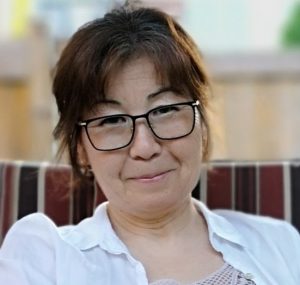Quickly sharing the genetic sequence of the new coronavirus in early 2020 made all the difference in the response to the pandemic.
“In one year, we’ve gone from the discovery of the gene of the COVID-19 virus to a vaccine. That could have never happened if we hadn’t been sharing,” says Aled Edwards, professor of the Donnelly Centre for Molecular and Biomolecular Research at the University of Toronto and director of the Structural Genomics Consortium (SGC). “If not for open, we wouldn’t be where we are today.”
Still, the science behind public health interventions takes time. The research community was also poised to make fast progress because of decades of advances made earlier in labs, Edwards notes. Availability of open data allowed companies to quickly apply new information to what they already knew to develop therapeutics and vaccines. More broadly, the moment has ushered in a growing awareness of the value of open practices, Edwards says.
“The biggest change that the pandemic has had is on the willingness of people to share,” Edwards says. “The acceptance of the concept of open is the greatest contribution that COVID made to the public good.”
On the clinical side, rapidly sharing information about what does and doesn’t work had an impact on patient care during the outbreak. Previous reluctance in the biomedical sciences to put research on preprint servers has been largely set aside. Widespread sharing of COVID-related results has demonstrated that others do notice work posted prior to publication in a formal academic journal. Many are realizing the benefits to the common good outweigh any concerns.
(See study on unprecedented role of preprints in the dissemination of COVID-19 science and the impact on the pandemic.)
“COVID has massively accelerated [posting on preprint servers] and shown that it is possible to share your science and get the credit,” Edwards says. Still, incentives systems need to change to reward sharing and encourage more people to make their data available, he adds.
Operating in the open is nothing new for Edwards. Since 2003, the SGC lab in Toronto has been freely sharing reagents and proteins. The lab also has an explicit policy of not patenting its discoveries. During COVID-19, the University of Toronto funded 30 research projects related to the pandemic and researchers at SGC embraced open practices.
The SGC lab has made and shared hundreds of high-quality samples of COVID reagents  (building blocks of the virus) with labs across Canada and around the world. There were huge shortages of the spike protein and since the SGC lab already had experience in this area, researchers believed it was more efficient and cost effective to share what it had with others, says Alma Seitova, senior research associate at SGC.
(building blocks of the virus) with labs across Canada and around the world. There were huge shortages of the spike protein and since the SGC lab already had experience in this area, researchers believed it was more efficient and cost effective to share what it had with others, says Alma Seitova, senior research associate at SGC.
“The whole idea from the beginning was open access,” says Seitova of the protein manufacturing center. “We cannot fight diseases unless we get united in sharing.”
Also at SGC, Setayesh Yazdani and her colleagues, built a portal to investigate novel approaches for COVID drug discovery. When COVID hit in March 2020, she pivoted to a project to examine the pockets on the protein surfaces of the coronavirus that could be targeted for the development of a pan-coronavirus drug. They used the open source database, Protein Data Bank (PDB) to gather information about the shapes of the viral protein molecules and the Uniprot database for the sequences of coronavirus proteins.
Yazdani, a master’s candidate in the Department of Pharmacology and Toxicology, collaborated with other researchers on the analysis and they made their results openly available here alongside the preprint.
with other researchers on the analysis and they made their results openly available here alongside the preprint.
“It’s really interesting to see how the results of the project can be translated to something real. It’s so powerful,” says Yazdani. She shares her work on Twitter, LinkedIn and through an online lab notebook customizing the story of her findings for the platform and audience. Yazdani says it’s been motivating to share her work in progress, especially on such an important public health issue. She appreciates the environment at SGC where everyone values open science and hopes it spreads.
“Scientists have a role to let people know what open science meant for the pandemic,” Yazdani says. “As people get to understand that, then they become more open to how we can apply this same principle to other areas of research — that is not about COVID — and embrace open science to get to solutions faster.”